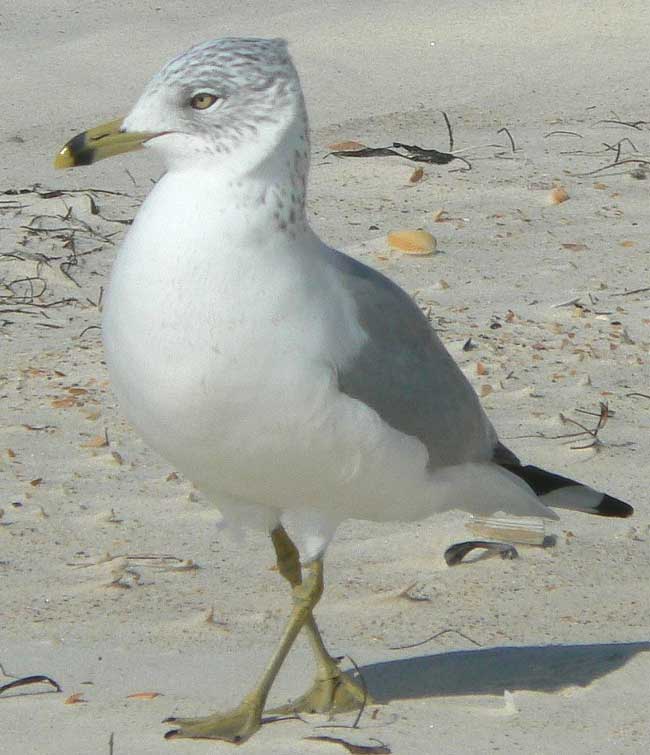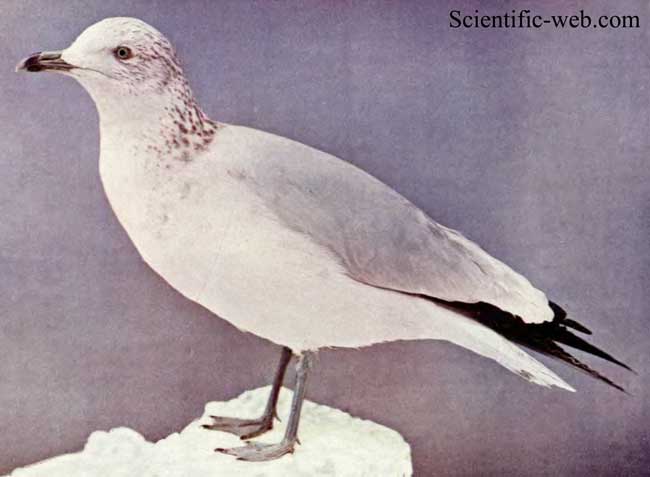
Larus delawarensis (*)
Superregnum: Eukaryota
Cladus: Unikonta
Cladus: Opisthokonta
Cladus: Holozoa
Regnum: Animalia
Subregnum: Eumetazoa
Cladus: Bilateria
Cladus: Nephrozoa
Superphylum: Deuterostomia
Phylum: Chordata
Subphylum: Vertebrata
Infraphylum: Gnathostomata
Megaclassis: Osteichthyes
Cladus: Sarcopterygii
Cladus: Rhipidistia
Cladus: Tetrapodomorpha
Cladus: Eotetrapodiformes
Cladus: Elpistostegalia
Superclassis: Tetrapoda
Cladus: Reptiliomorpha
Cladus: Amniota
Classis: Reptilia
Cladus: Eureptilia
Cladus: Romeriida
Subclassis: Diapsida
Cladus: Sauria
Infraclassis: Archosauromorpha
Cladus: Crurotarsi
Divisio: Archosauria
Cladus: Avemetatarsalia
Cladus: Ornithodira
Subtaxon: Dinosauromorpha
Cladus: Dinosauriformes
Cladus: Dracohors
Cladus: Dinosauria
Ordo: Saurischia
Cladus: Eusaurischia
Subordo: Theropoda
Cladus: Neotheropoda
Cladus: Averostra
Cladus: Tetanurae
Cladus: Avetheropoda
Cladus: Coelurosauria
Cladus: Tyrannoraptora
Cladus: Maniraptoromorpha
Cladus: Maniraptoriformes
Cladus: Maniraptora
Cladus: Pennaraptora
Cladus: Paraves
Cladus: Eumaniraptora
Cladus: Avialae
Infraclassis: Aves
Cladus: Euavialae
Cladus: Avebrevicauda
Cladus: Pygostylia
Cladus: Ornithothoraces
Cladus: Ornithuromorpha
Cladus: Carinatae
Parvclassis: Neornithes
Cohors: Neognathae
Cladus: Neoaves
Ordo: Charadriiformes
Subordo: Lari
Familia: Laridae
Subfamilia: Larinae
Genus: Larus
Species: Larus delawarensis
Name
Larus delawarensis Ord, 1815

Larus delawarensis
References
A New Geographical, Historical, and Commercial Grammer [Guthrie] ed. 2 (Am.) 2: 319, appendix: 48.
Vernacular names
العربية: نورس ديلاوير
български: Пръстенчатоклюна чайка
brezhoneg: Gouelan beg gwalennek
català: Gavina de Delaware
čeština: Racek delawarský
Cymraeg: Gwylan fodrwybig
dansk: Ringnæbbet måge
Deutsch: Ringschnabelmöwe
English: Ring-billed Gull
Esperanto: Ringobeka mevo
español: Gaviota de Delaware
eesti: Vöötnokk-kajakas
euskara: Delaware kaioa
فارسی: کاکایی نوکحلقهای
suomi: Rengasnokkalokki
føroyskt: Sæðingur
français: Goéland à bec cerclé
Gaeilge: Faoileán Bandghobach
galego: Gaivota de Delaware
Kreyòl ayisyen: Mòv bèk jòn
magyar: Gyűrűscsőrű sirály
Bahasa Indonesia: Camar paruh cincin
íslenska: Hringmáfur
italiano: Gabbiano di Delaware
日本語: クロワカモメ
한국어: 북미갈매기
lietuvių: Žiedasnapis kiras
Nederlands: Ringsnavelmeeuw
norsk: Ringnebbmåke
Diné bizaad: Tónteel tsídii íiyisígíí
polski: Mewa delawarska
português do Brasil: Gaivota-de-bico-manchado
português: Gaivota-de-Delaware
rumantsch: Muetta dal bec a cularin
русский: Делавэрская чайка
slovenčina: Čajka obrúčkozobá
slovenščina: Progastokljuni galeb
svenska: Ringnäbbad mås
தமிழ்: மோதிர மூக்கு கடற்பறவை
Türkçe: Halkalı Martı
українська: Мартин делаверський
Tiếng Việt: Mòng biển mỏ vòng
中文: 环嘴鸥
The ring-billed gull (Larus delawarensis) is a medium-sized gull. The genus name is from Latin Larus which appears to have referred to a gull or other large seabird. The specific delawarensis refers to the Delaware River.[2]
Description
Species is named for the dark ring around its bill
Measurements:[3]
Length: 16.9-21.3 in (43-54 cm)
Weight: 10.6-24.7 oz (300-700 g)
Wingspan: 41.3-46.1 in (105-117 cm)
The head, neck and underparts are white; the relatively short bill is yellow with a dark ring; the back and wings are silver gray; and the legs are yellow. The eyes are yellow with red rims. This gull takes three years to reach its breeding plumage; its appearance changes with each fall moult. The average lifespan of an individual that reaches adulthood is 10.9 years[4] The oldest ring-billed gull on record was observed in Cleveland in 2021, still alive at the age of 28 years.[5]
Distribution and habitat
The ring-billed gulls' breeding habitat is near lakes, rivers, or the coast in Canada and the northern United States. They nest colonially on the ground, often on islands. This bird tends to be faithful to its nesting site, if not its mate, from year to year.
The ring-billed gull is a familiar sight in American and Canadian parking lots, where it can regularly be found congregating in large numbers.[6][7] In some areas, it is displacing less aggressive birds such as the common tern.
They are migratory and most move south to the Gulf of Mexico and the Atlantic and Pacific coasts of North America, and the Great Lakes.
Vagrancy
This gull is a regular wanderer to western Europe. In Ireland and Great Britain it is no longer classed as a rarity, with several birds regularly wintering in those countries.
Diet
Ring-billed gulls forage in flight or pick up objects while swimming, walking or wading. They also steal food from other birds and frequently scavenge. They are omnivorous; their diet may include insects, fish, grain, eggs, earthworms and rodents. These birds are opportunistic and have adapted well to taking food when discarded or even left unattended by people. It is regarded as a pest by many beach-goers because of its willingness to steal unguarded food on crowded beaches. The birds congregate at beaches, marinas, docks and parks where people will hand feed them.
The gull's natural enemies are rats, foxes, dogs, cats, raccoons, coyotes, eagles, hawks, and owls.
Status
In the late 19th century, the ring-billed gull was hunted for its plumage. Its population has since rebounded and it is probably the most common gull in North America. The population was estimated in 2006 as 2.55 million birds.[8]
References
BirdLife International (2018). "Larus delawarensis". IUCN Red List of Threatened Species. 2018: e.T22694317A132541912. doi:10.2305/IUCN.UK.2018-2.RLTS.T22694317A132541912.en. Retrieved 18 November 2021.
Jobling, James A (2010). The Helm Dictionary of Scientific Bird Names. London: Christopher Helm. pp. 132, 219. ISBN 978-1-4081-2501-4.
"Ring-billed Gull Identification, All About Birds, Cornell Lab of Ornithology". www.allaboutbirds.org. Retrieved 2020-09-25.
"The IUCN Red List of Threatened Species". IUCN Red List of Threatened Species. Retrieved 2019-12-21.
Mandelbaum, Ryan F. "Oldest Ring-billed Gull on Record Discovered by Cleveland Birder". National Audubon Society. Retrieved 11 April 2021.
"Ring-billed Gull". Common Birds of New England. Retrieved 16 March 2014.
Ray, C. Claiborne. "Why do Sea Gulls Like Parking Lots?". New York Times. Retrieved 16 March 2014.
Pollet, I. L., D. Shutler, J. W. Chardine, and J. P. Ryder (2020). Ring-billed Gull (Larus delawarensis), version 1.0. In Birds of the World (A. F. Poole, Editor). Cornell Lab of Ornithology, Ithaca, NY, USA. https://doi.org/10.2173/bow.ribgul.01
Retrieved from "http://en.wikipedia.org/"
All text is available under the terms of the GNU Free Documentation License

